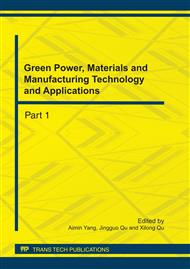p.415
p.421
p.426
p.431
p.436
p.442
p.447
p.452
p.457
The Design of Double Liquid Zoom Lens’ Model Based on Electrowetting Effect
Abstract:
The electrowetting effect is one physical chemistry phenomenon, it through adds certain external voltage in the solid - liquid contact surface to change the liquid to the solid moist degree, thus changing the contact angle of liquids and solids. In this article double liquid zoom lens are based on this kind of electrowetting effect. Optics focal variation system realizes the focal variation to satisfy two basic conditions[2]: (1) changing the focal distance; (2) maintaining the image plane position invariance. The single liquid zoom lens cannot maintain the position of the image formation surface invariance, this article takes on the electrowetting effect double liquid zoom lens as a foundation, and designs to realize new optical systems without mechanical movement focal variation using the motor control, and through MATLAB software simulation inferential reasoning the result.
Info:
Periodical:
Pages:
436-441
Citation:
Online since:
August 2011
Authors:
Price:
Сopyright:
© 2011 Trans Tech Publications Ltd. All Rights Reserved
Share:
Citation:


